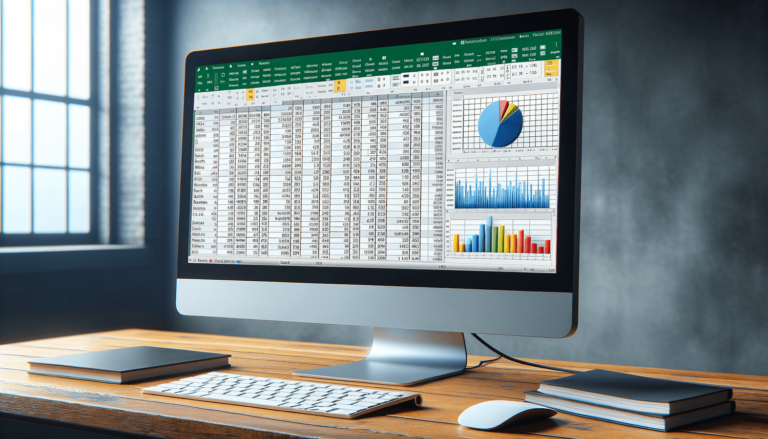Create Data in Excel: A Simple Guide

Introduction to Excel

Excel is not just a tool for financial analysts; it’s a versatile piece of software that can benefit anyone looking to organize, analyze, and present data effectively. Whether you’re planning a budget, tracking project progress, or compiling research data, Excel offers a wide array of functions and features to streamline your work. This guide will walk you through the basics of creating, managing, and analyzing data in Excel, ensuring you can harness its full potential with ease.
Setting Up Your Excel Sheet

Before you dive into entering data, setting up your Excel worksheet correctly is crucial for efficient data management:
- Open Excel: Start by launching Microsoft Excel on your computer.
- Choose a Template or Blank Workbook: If you’re working on a specific type of project (like budgeting), use a template. For custom data entry, select a blank workbook.
- Understanding the Layout:
- The grid of cells where you’ll enter data.
- Rows and columns labeled with numbers and letters respectively.
- Formula bar above the grid for entering or editing data.
📌 Note: If you're using a shared workbook, make sure to discuss the setup with your team to ensure everyone understands the structure.
Entering Data

Now that your sheet is set up, it’s time to input data:
- Selecting Cells: Click on a cell or drag across multiple cells to select them.
- Entering Data: Type directly into the selected cell or use the formula bar. Press Enter or use the arrow keys to move between cells.
- Data Types: Excel recognizes several data types:
- Text: Labels, names, etc.
- Numbers: Financial figures, dates, or any numerical data.
- Formulas: For calculations.
- Date and Time: Automatically formats when entered in common formats.
Basic Functions and Formulas

To truly leverage Excel, you’ll need to understand some basic functions and formulas:
- Sum: Use
=SUM(A1:A10)to add values in cells A1 through A10. - Average: Calculate average with
=AVERAGE(A1:A10). - IF Statements: For conditional logic, e.g.,
=IF(A1>10, “High”, “Low”). - VLOOKUP: To look up a value in a table,
=VLOOKUP(B2, A1:D10, 3, FALSE).
📌 Note: Always test your formulas with sample data to ensure they work as intended.
Data Validation and Conditional Formatting

To enhance data integrity and visual appeal:
- Data Validation:
- Go to Data > Data Validation.
- Set rules like ‘Whole Numbers’, ‘Decimal’, ‘List’, etc.
- Conditional Formatting:
- From the ‘Home’ tab, choose ‘Conditional Formatting’.
- Apply color scales, data bars, or icon sets to highlight trends or outliers.
Working with Tables

Converting your data into a table can significantly improve management:
- Creating a Table:
- Select your data range.
- Use Ctrl+T or go to Insert > Table.
- Confirm if your table has headers.
- Advantages:
- Sort and filter data easily.
- Formulas update automatically as you add or remove rows.
- Enhanced formatting options.
To illustrate, here's how a simple table might look:
| Name | Age | City |
|---|---|---|
| John Doe | 30 | New York |
| Jane Smith | 25 | Los Angeles |

Conclusion

In this comprehensive guide, we've explored the fundamental aspects of Excel data management. From setting up your spreadsheet, entering data, to using functions and formulas, you now have the tools to create a powerful data system. Excel's ability to organize, analyze, and present data effectively makes it indispensable for both personal and professional use. Remember, practice is key to mastering Excel; the more you work with it, the more proficient you'll become. Whether for budgeting, project management, or data analysis, Excel is your gateway to efficient data handling.
What’s the difference between Excel functions and formulas?

+
Functions in Excel are pre-defined operations that perform calculations using specific values, called arguments, in a particular order. Formulas, on the other hand, are expressions created by combining functions, operators, cell references, and constants to calculate a value.
How can I make my Excel data look better?

+
You can use formatting options like font styles, color schemes, cell borders, and even apply themes to make your data visually appealing. Additionally, conditional formatting can highlight important data trends or conditions at a glance.
What are some common mistakes to avoid in Excel?

+
Common mistakes include not formatting dates correctly, using incorrect cell references in formulas, neglecting data validation, and not protecting cells to prevent accidental changes. Always double-check your work to avoid these issues.



